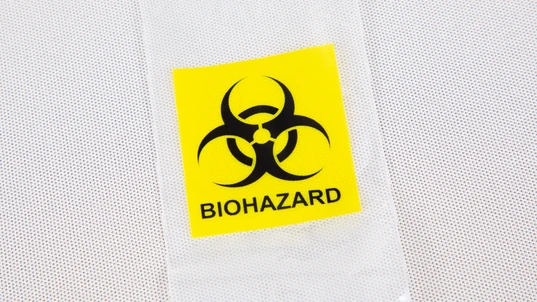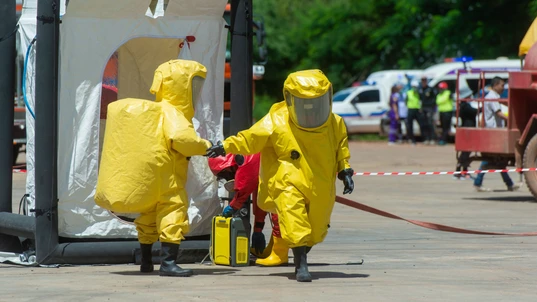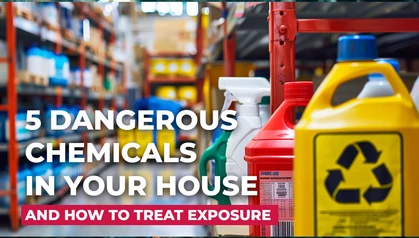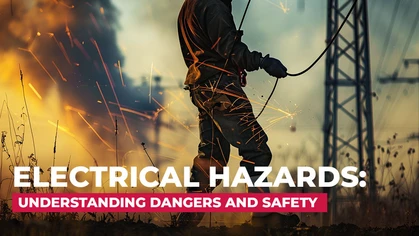Biological Hazards in the Workplace: A Comprehensive Guide for Australian Workers

Danger

Plastic biohazard bag with logo brand and text sign.
Biological hazards are a significant occupational hazard for workers in Australia. Discover various injury types that can occur and access statistical information on the annual injury rates. Moreover, receiving adequate first aid training to manage biological hazards within the workplace proficiently is crucial.Understanding Biological Hazards
It is important to be aware of biological hazards as they may not be visible to the naked eye, making them easy to overlook. These hazards involve living organisms or substances produced by them that have the potential to harm human health. These hazards may include:- Viruses
- Bacteria
- Fungi
- Parasites
- Other microorganisms (like bodily fluids, tissues, and waste)
How to Identify Biological Hazards
Identifying biological hazards in the workplace can be challenging as they are often invisible. However, several signs may indicate the presence of biological hazards, including:- Unusual odours or smells
- Visible mould or fungi growth
- Unexplained rashes, respiratory problems, or other health issues among workers
- Evidence of pests, such as rodents or insects, which can carry diseases
How to Avoid Injury from Biological Hazards
Biological hazards are a potential threat in many workplaces, it is important to take appropriate precautions to avoid exposure and minimize the risk of harm. There are several steps that workers can take to avoid injury from biological hazards in the workplace, including:- Conduct a hazard assessment to identify and assess potential biological hazards in the workplace.
- Implement engineering and administrative controls to minimize exposure to these hazards.
- Install ventilation systems and establish policies and procedures for handling hazardous materials.
- Provide personal protective equipment (PPE) like gloves, masks, and protective clothing to workers exposed to biological hazards.
- Encourage good hygiene practices, such as frequent hand washing, avoiding touching the face, and covering coughs and sneezes.
- Regularly clean and disinfect surfaces and equipment that may be contaminated with biological hazards.
- Offer vaccination programs for diseases that workers may be exposed to, such as hepatitis B, to prevent the spread of illness in the workplace.

Firefighters with hazmat (hazardous material) suits to protect them from dangerous chemical work.
Types of Injuries from Biological Hazards
It's crucial to grasp the fact that exposure to biological hazards could lead to a wide range of injuries, varying in severity from minor to life-threatening. It's imperative to take necessary precautions and follow safety protocols to minimize the risk of harm when dealing with such hazards. Some of the most common injuries associated with biological hazards include:- Skin irritation or rashes
- Respiratory problems, such as asthma or allergies
- Gastrointestinal problems, such as nausea, vomiting, and diarrhea
- Infectious diseases, such as hepatitis, tuberculosis, and HIV
- Allergic reactions, which can range from mild to severe and can be life-threatening
First Aid Training
First aid training is essential in dealing with workplace biological hazards. The proper training can help minimize the risk of injury and prevent further harm:- Increases awareness of potential biological hazards in the workplace
- Provides knowledge of how to identify the signs and symptoms of exposure to biological hazards
- Teaches proper procedures for removing the source of contamination and flushing the affected area with clean water
- Provides knowledge of when to seek medical attention and how to document incident details
- Teaches how to provide appropriate follow-up care to those affected by biological hazards
- Improves overall workplace safety and reduces the risk of injury or illness from biological hazards
- Helps workers feel more confident and prepared to handle emergencies related to biological hazards
- Demonstrates a commitment to employee safety and well-being
- Helps organizations comply with legal and regulatory requirements related to workplace safety and hazardous materials handling
Conclusion
As an employer in Australia, prioritising your workers' safety and well-being is crucial. This means identifying and managing any biological hazards present in the workplace. Ensure that your employees receive adequate training and equipment to prevent work-related injuries and illnesses caused by these hazards. Ensuring employee safety is crucial in preventing work-related injuries and illnesses. Providing protective gear, training, and monitoring for hazards is key. A workplace culture that prioritizes well-being through breaks, healthy options, and mental health awareness promotes productivity and positivity. In Australia, investing in safety is both ethical and strategic.
Originally published at
https://www.australiawidefirstaid.com.au/resources/biological-hazards-in-the-workplace
as part of the Australia Wide First Aid Articles Library









